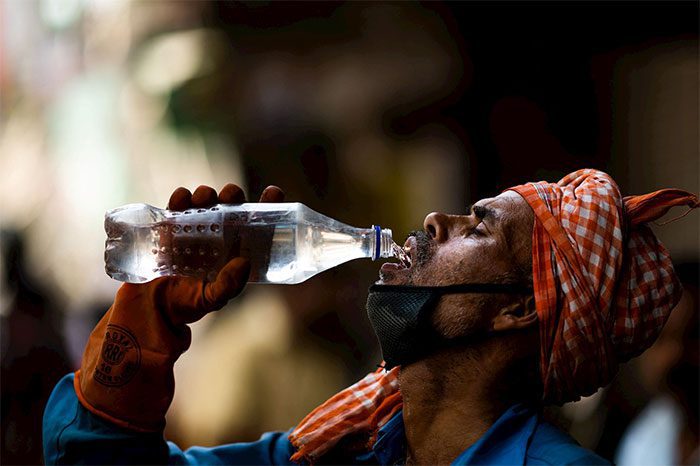A recent study shows a correlation between rising temperatures and increasing rates of partner violence.
On July 2, a study published in JAMA Psychiatry by the American Medical Association examined the “relationship between ambient temperature” and “rates of partner violence” in India, Nepal, and Pakistan.
Researchers monitored over 194,800 girls and women aged 15 to 49 to investigate the prevalence of partner violence, including physical, sexual, and emotional abuse.

A worker quenching thirst on the streets amidst rising temperatures in New Delhi.
Overall, the study found that an average annual temperature increase of 1 degree Celsius is associated with a 4.5% rise in partner violence.
Although the study indicates that violence increases due to heat across all income groups, the largest increase is observed in low-income and rural households.
Among the three surveyed countries, the surge in violence and abuse related to rising temperatures is highest in India. The study indicates that a 1 degree Celsius increase in temperature in India correlates with an 8% rise in physical violence and a 7.3% increase in sexual violence against women.
In India, unprecedented heatwaves are becoming an annual occurrence. In May, severe heat swept across vast areas of the country, with temperatures reaching up to 45 degrees Celsius (113 degrees Fahrenheit).
Abinash Mohanty, head of the Climate Change and Sustainability Department at IPE-Global, stated: “Extreme climate events are becoming increasingly severe, devastating the lives and livelihoods of people, disproportionately impacting the poorest and most vulnerable communities, and contributing to gender-based violence against girls and women.”
Mohanty argues that social welfare programs in the region responding to climate change need to address the relationship between extreme heat and gender-based violence.
He added: “Although empirical evidence and data limitations remain blind spots in determining the impact of climate change and gender-based violence, vulnerable countries like India must ensure that climate action plans converge and address these challenges.”
Extreme high temperatures also reduce working hours for daily wage workers, leading to decreased income and forcing family members to spend more time at home. This increases the household workload for women and creates stress for men who feel unable to provide for their families.
The JAMA study also found that economic stress from agricultural production and declining labor efficiency as well as deteriorating living conditions caused by extreme weather events could further exacerbate domestic violence.
South Asia is considered one of the most vulnerable regions to climate change by climate scientists.
“Any form of stress can lead to domestic violence. In South Asia, where air conditioning usage is minimal, heat stress is causing more domestic violence. I believe the climate crisis will lead to more discord within families and society,” stated Chandra Bhushan, Director of the International Forum on Environment, Sustainability, and Technology.



















































